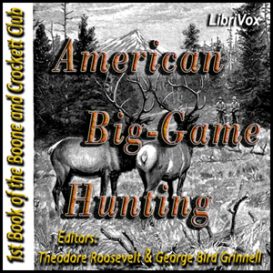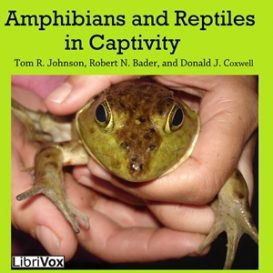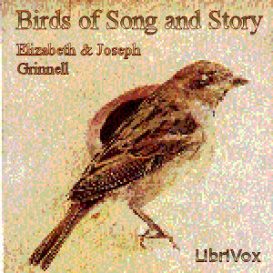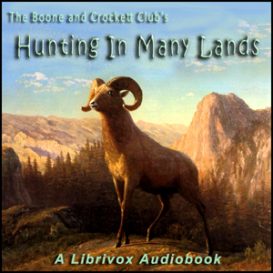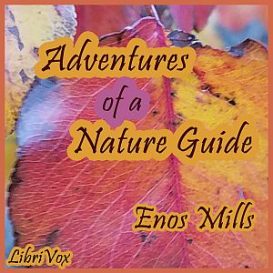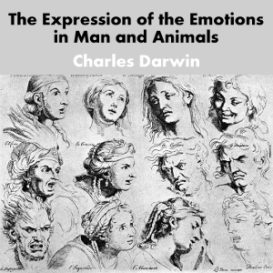Animals
Showing all 35 results
A Book of Whales
A Book of Whales is a natural history of whales for the layman. – Summary by A. Gramour
American Big-Game Hunting
The first book published by The Boone and Crockett Club founded by Theodore Roosevelt and George Grinnell, who declared in their Editors Note: “Hunting big game in the wilderness is, above all things, a sport for a vigorous and masterful people. The rifle-bearing hunter, whether he goes on foot or on horseback, whether he voyages in a canoe or travels with a dog-sled, must be sound of body and firm of mind, and must possess energy, resolution, manliness, self-reliance, and capacity for hardy self-help. In short, the big-game hunter must possess qualities without which no race can do its life-work well; and these are the very qualities which it is the purpose of this Club, so far as may be, to develop and foster.” A bit outdated as to the equipment they used, this book is nevertheless an intense look at the west in early days, and at the beginnings of the conservationist movement in America. Each chapter focuses on a different animal, from buffalo, mountain goat, elk, pronghorn sheep, grizzlies, etc., indigenous peoples, different areas like the Rockies and Yellowstone, and it still captures the essence of the spirit of the hunt. The book ends with a list of the club’s original 100 members, a veritable Who’s Who of Generals, Colonels, Doctors, Senators and Representatives, amongst them that most illustrious Gen’l William T. Sherman. ( ~ Michele Fry, read by LibriVox Volunteers)
Amphibians and Reptiles in Captivity
In recent years the number of people interested in keeping amphibians and reptiles in captivity has grown rapidly. All too often, these same people have little knowledge of the proper care needed for their captives, nor do they know where to turn in order to learn the needs of their animals. It is the intent of the authors of this special issue to offer the proper information needed to successfully keep amphibians and reptiles in captivity. We are by no means THE experts on the subject, nor do we claim to cover all the facts. However, we do hope that enough information is furnished to answer most of the common questions asked by people. – Summary by Tom R. Johnson
Anecdotes of Dogs
“Histories are more full of examples of the fidelity of dogs than of friends.” The character, sensibilities, and intellectual faculties of animals have always been a favourite study, and they are, perhaps, more strongly developed in the dog than in any other quadruped, from the circumstance of his being the constant companion of man. I am aware how much has been written on this subject, but having accumulated many original and interesting anecdotes of this faithful animal, I have attempted to enlarge the general stock of information respecting it. It is a pleasing task, arising from the conviction that the more the character of the dog is known, the better his treatment is likely to be, and the stronger the sympathy excited in his behalf. (Summary by Edward Jesse, extracted from the Preface)
Anecdotes of the Habits and Instinct of Animals
Stories about unusual interactions between animals and humans that reflect some attitudes to the wild in the mid-eighteen hundreds, including trophy hunting. “Chronically ill and often in pain,” the author, Mary Custis Lee, experienced “hardship with sturdy and radiant faith.” Maybe that’s why she did not turn away in this book, from unpleasant and often gory accounts of animal encounters. (Summary by Czandra)
Animals of the Past
Prior to the emergence of paleontology and comparative anatomy as scientific disciplines at the end of the 18th century, it was generally known that there were species of animals that had disappeared completely. The term “extinction” originally applied to the extinguishing of fires or erasing of one’s debt. It was not until 1784 that the term extinction was used to denote the complete eradication of a species of living being. In 1901, Frederic A. Lucas penned an overview of vertebrate animals whose only evidence of being remained in fossil records. The book focuses primarily on vertebrate animals, from fish to mammals. – Summary by Jeffery Smith
Birds and Man
During the later part of his life Hudson lived in southern England, where he was involved very early on with the RSPB (Royal Society for the Protection of Birds). Birds and Man is a slow moving work where Hudson discusses his love of birds, and the need for better protection of them. – Summary by clarinetcarrot
Birds in the Calendar
Delightful sketches of British wild birds – a bird for every month of the year from the pheasant in January to the robin in December. This collection of articles, reprinted in book form from the periodical The Outlook, is full of fascinating information about bird behaviour and habitat, as well as many interesting anecdotes. (Summary by Ruth Golding)
Birds of Song and Story
This mother and son team, each distinguished in their field, collaborate to give charming portraits of a dozen of our favorite song birds. Their use of poetry and flowing prose makes each of these birds come alive in and endearing and accessible way. – Summary by Larry Wilson
Constructive Beekeeping
The author explores the effects of condensation and evaporation as they relate to the success of a beehive. The results of various experiments and the author’s thoughts are given. (Summary by SoMDbeekeeper)
Hunting In Many Lands
The first volume published by the Boone and Crockett Club, entitled “American Big Game Hunting,” confined itself to sport on the American continent. This second volume presents a number of interesting sketches written by club members who have hunted big game in other lands. Essays include: Hunting in East Africa, To the Gulf of Cortez, A Canadian Moose Hunt, A Hunting Trip in India, Dog Sledging in the North, Wolf-Hunting in Russia, A Bear-Hunt in the Sierras, The Ascent of Chief Mountain, The Cougar, Big Game of Mongolia and Tibet, Hunting in the Cattle Country, Wolf-Coursing, Game Laws, and Protection of the Yellowstone National Park. – Summary by Michele Fry
The Adventures of a Nature Guide
Enos Mills (1870-1922 ), naturalist and conservationist, was instrumental in the creation of Rocky Mountain National Park. Like his mentor John Muir, Mills was an intrepid solitary high country rambler, as well as an accomplished Colorado mountain guide. There are mountain tales aplenty in “Adventures of a Nature Guide.” At one point, Mills climbs Long’s Peak alone in a gale with winds topping 170 mph., “carried away with the wild, elemental eloquence of the storm.” Near the summit, the wind is so fierce he cannot make headway, so he concludes to “reverse ends.” “Putting a shoulder against a rock point, I allowed the wind to push my legs around. This . . . enabled me to brace effectively with my feet, and also to hang on more securely with my hands. . . There was no climbing; the wind sucked, dragged, pushed, and floated me ever upward.” Summary by Sue Anderson.
The American Bee Journal, Vol. VI. No. 5, Nov 1870
The American Bee Journal is the ?oldest bee paper in America established in 1861 devoted to scientific bee-culture and the production and sale of pure honey. Published every Wednesday, by Thomas G. Newman, Editor and Proprietor? In this issue are included articles on wintering bees, foulbrood, introducing queens, hives, and reports from Vermont, New York, Illinois, and Massachusetts, among other topics and correspondence. – Summary by Larry Wilson
The American Bee Journal. Vol. XVII, No. 14, Apr. 6, 1881
The American Bee Journal is the ?oldest bee paper in America established in 1861 devoted to scientific bee-culture and the production and sale of pure honey. Published every Wednesday, by Thomas G. Newman, Editor and Proprietor? In this volume are short articles and correspondence on a variety of topics from Extracting Bees to Raspberry as a Honey Plant. – Summary by Larry Wilson
The American Book of the Dog
Here is a period piece, covering 47 breeds, about the early days of dog breeding, the birth of the American Kennel Club (1884) which firmly established breed standards, and the development of bench shows and field trials. Each article, written by a premier breed expert of the day, sheds light on how today’s breeds were sculpted from the best traits of dogs of yesteryear. Old dog training theory and methods of treating disease are discussed. Editor Shields called this book (as of 1891) ?the grandest work on the dog ever published.? Its various authors were part of the movement importing canine stock from Europe, often at enormous expense, and organizing national breed clubs from the various private clubs they were part of. (Summary by Michele Fry)
The Book of Household Management
“Mrs. Beeton’s” is a guide to all aspects of running a household in Victorian Britain. Published in 1861, it was an immediate bestseller, running to millions of copies within just a few years. In the cookery sections, Mrs. Beeton follows the animal “from his birth to his appearance on the table.? Learn how to care for poultry during moulting season, how to wean calves, how to cure hams, salt cod, carve mutton, and much more. (Summary by Wikipedia and Sarah Jennings)
The Expression of the Emotions in Man and Animals
The Expression of the Emotions in Man and Animals is a book by Charles Darwin, published in 1872, concerning genetically determined aspects of behaviour. It was published thirteen years after On the Origin of Species and alongside his 1871 book The Descent of Man, it is Darwin’s main consideration of human origins. In this book, Darwin seeks to trace the animal origins of human characteristics, such as the pursing of the lips in concentration and the tightening of the muscles around the eyes in anger and efforts of memory. Darwin sought out the opinions of some eminent British psychiatrists, notably James Crichton-Browne, in the preparation of the book which forms Darwin’s main contribution to psychology. – Summary by Availle




